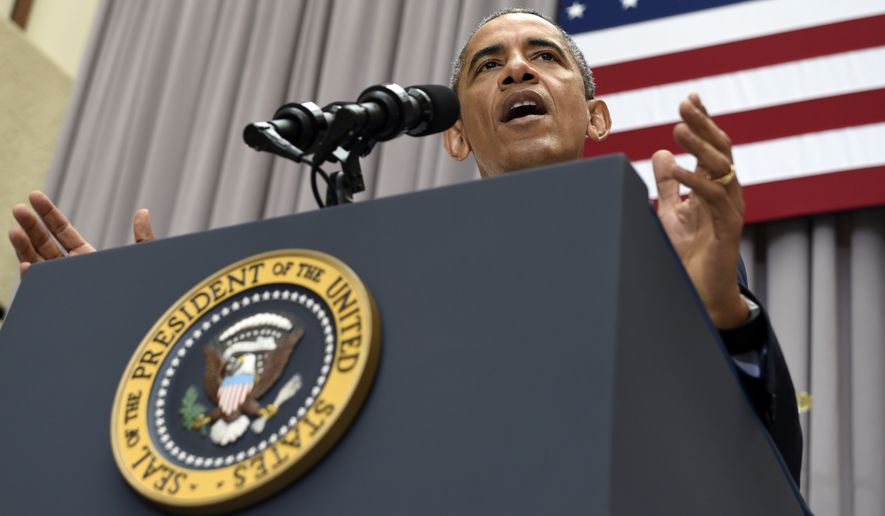ANALYSIS/OPINION:
First of three parts
Despite the saga over Hillary Clinton’s emails, Donald Trump’s sprint to front-runner status in the Republican presidential race and some interesting pennant races, the news this summer has never drifted far from the nuclear deal with the Islamic Republic of Iran.
That’s because it’s a big deal. And a tough one to assess.
I’ve worked hard not to be reflexive about that assessment. Even when I’ve been critical, I’ve allowed that I know how hard this issue really is.
Over the past several weeks my personal thoughts and emotions about the deal have been sorting themselves out through a three-step process: first anger, which admittedly still lingers; then recognition, the product of assessing domestic and global political realities; and finally determination, a less emotional and more reasoned calculus on a way forward.
That’s a lot for one column, so let me take these three stages one at a time.
Today, anger, and that’s anger over both process and substance.
First, there was blatant (and conscious) overpromising by President Obama’s administration. We were going to substantially dismantle the Iranian nuclear program. The hardened centrifuge facility at Fordow and the plutonium reactor at Arak had no place in a peaceful nuclear program. No deal could be considered effective without including Iran’s nuclear-capable ballistic missiles. The Iranians would have to come clean about their past efforts to actually craft a bomb. Inspections would be anywhere, anytime.
These positions kept potential critics at bay during the negotiations, but their hedging or outright exclusion in the final agreement created a maddening gap between promise and performance.
Then, beyond these headlines, there was the fine print of the agreement and some sidebar arrangements, which have been trickling out as the minutiae of the deal have been studied and dissected. I must admit that I wasn’t prepared for a U.S. promise to help the Iranians produce nuclear fuel or to protect the Iranian nuclear program against third-party sabotage. Color me surprised, too, for the late insertion of ballistic missiles into the agreement, not as a way to limit Iran’s nuclear delivery systems, but to end sanctions and limits on Tehran’s missile development program. Ditto the lifting of the embargo on conventional arms deliveries to the Islamic Republic.
Happily, the deal creates a mechanism for “snapback” sanctions that avoids potential Russian or Chinese vetoes in New York, but it also seems to create a grandfather clause for any contracts signed with Iran before the snapback process goes into effect and then explicitly allows Iran to abrogate the entire agreement if any sanctions are reimposed. Not exactly a user-friendly formula.
Then there is the definition of access, as in international inspectors can “access” suspect sites. Apparently the common English meaning of the word access will not apply here as inspectors are not guaranteed that they can actually enter such sites. We have now learned that the international inspectors (who cannot include any Americans because the Iranians say they cannot) will outsource the taking of soil samples at the weapons development site at Parchin to the Iranians themselves.
The concessionary mood that continued after the deal suggests what life will be like post-agreement. Kassim Soleimani, head of Iran’s deadly Quds Force and still sanctioned from international travel, was recently welcomed to Moscow for discussions. The Russians then closed a deal to sell the Iranians the S-300 surface-to-air missile system, a violation of the spirit if not the actual language of the current arms embargo, and a sale sure to complicate the regional balance in the Gulf.
The Iranians, for their part, apparently felt emboldened enough to do some suspicious landscaping at Parchin, the site they will themselves later inspect. An IRGC brigadier announced massive ballistic war games. And a deputy foreign minister indicated that Tehran will seek the release of 19 Iranian “political prisoners” being held in the United States. Made me wonder if all this was the Persian equivalent of an extended middle finger.
Then, of course, there was the selling of the deal here in the United States. We were told that accepting this deal wasn’t even a close call, its merits were so obvious compared to other alternatives. We were told that opponents of the deal should be discounted because many of them had supported the war in Iraq. Besides, so-called hardliners here were making common cause with hardliners in Teheran. (Hmmm — in my experience, people often resort to ad hominem attacks when they aren’t that sure of their arguments.)
We were then told that the only alternative to this deal was war — if not immediately, then soon. I found it really hard to reconcile what we had been told for more than a year — that no deal was better that a bad deal — with the position that now it was this deal or inevitable conflict.
And so it went. Not for the first time, I felt like I had just been treated to a bait-and-switch at the large appliance department at Sears. And I’m pretty much reacting now the way I did when that first happened.
Anger can be a useful emotion; it’s built into our genetic code to help with self preservation. But it can also be destructive, even when it is justified.
Next, phase two on my road to recovery: recognition.
• Gen. Michael Hayden is a former director of the CIA and the National Security Agency. He can be reached at mhayden@washingtontimes.com. This the first of three columns on the Iran nuclear agreement.
• Mike Hayden can be reached at mhayden@example.com.




Please read our comment policy before commenting.